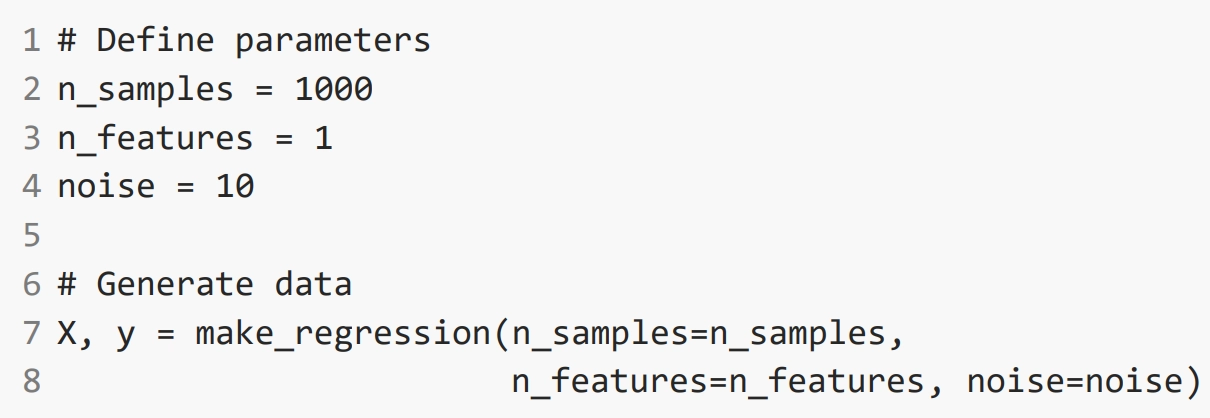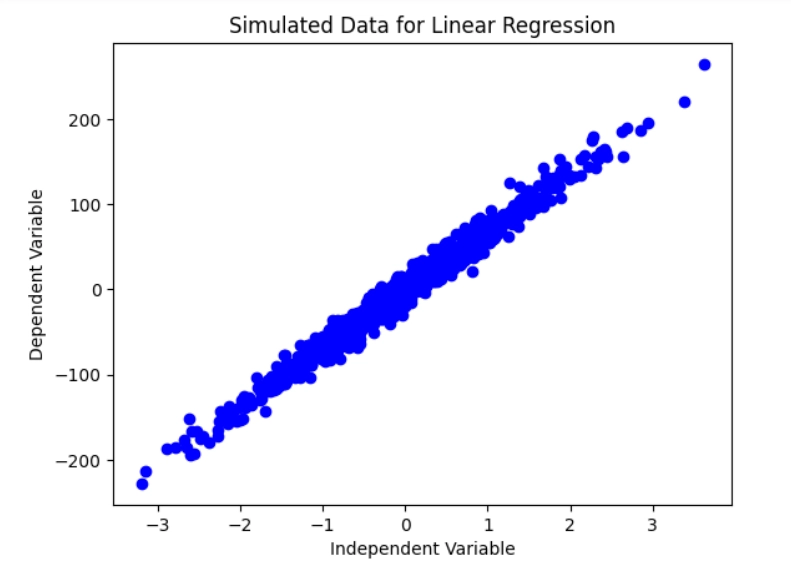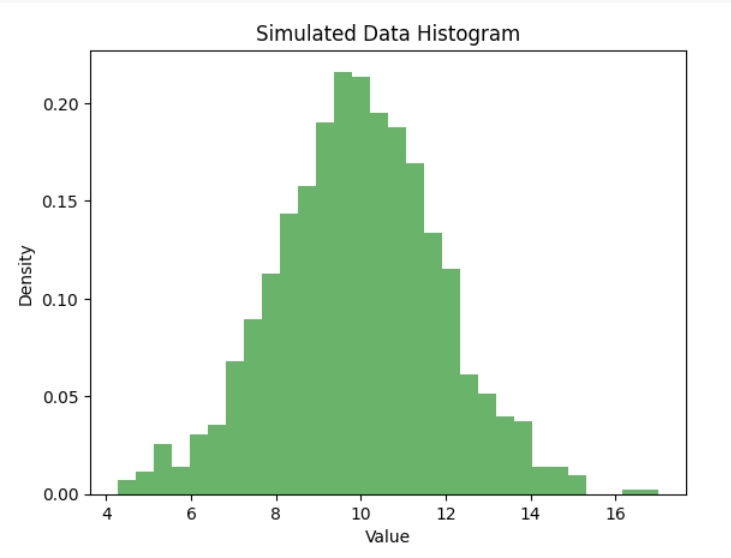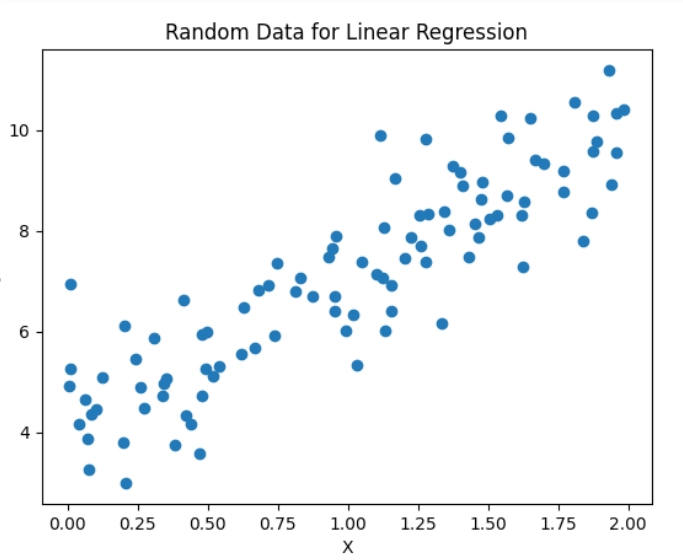How to Generate Data for Linear Regression in Python?
This tutorial covers step-by-step techniques to generate data for linear regression in Python effortlessly. | ProjectPro
Linear regression is a fundamental statistical method used for modeling the relationship between a dependent variable and one or more independent variables. However, testing them with simulated data is essential before applying linear regression algorithms to real-world problems. This ensures the reliability and accuracy of the model. This tutorial will help you understand why generating data for linear regression is crucial and provide a step-by-step guide on generating simulated data using Python.
Table of Contents
- Why Generate Data for Linear Regression?
- How to Generate Simulated Data in Python? - Step-by-Step Guide
- Example 1 - Generate Linear Regression Data Using Python
- Example 2 - Generate simulated data for a Normal Distribution
- Example 3 - Generate Simulated Data and Printing the Dataset
- How to Generate Random Data for Linear Regression in Python - Step-by-Step Guide
- Best Practices for Linear Regression Simulation
- Experiment with more such ML Algorithms with ProjectPro!
Why Generate Data for Linear Regression?
Generating data for linear regression serves several purposes:
-
Applying linear regression to real-world datasets is essential to evaluate the algorithm's performance. Simulated data allows us to test the algorithm under controlled conditions, enabling us to understand its strengths and limitations.
-
Simulated data allows us to explore relationships between variables, such as linear, quadratic, or exponential relationships. This helps us gain insights into how variables interact with each other and how they influence the outcome.
-
Linear regression models rely on certain assumptions about the data, such as linearity, independence, and homoscedasticity. Generating data allows us to check whether these assumptions hold and make adjustments if necessary.
-
Simulated data provides a benchmark for evaluating the performance of different algorithms or variations of linear regression models. By comparing the results obtained from simulated data with those from real-world data, we can assess the model's effectiveness and identify areas for improvement.
How to Generate Simulated Data in Python? - Step-by-Step Guide
Generating simulated data in Python involves creating artificial datasets based on specific rules or distributions. Here are the basic steps to generate simulated data:
Step 1: Define the Data Generating Process (DGP)
Decide on the characteristics and structure of the data you want to simulate. This includes the number of variables, their types (e.g., continuous, categorical), relationships between variables, and any underlying distributions.
Step 2: Choose a Method for Data Generation
Select an appropriate method or library to generate the simulated data based on the defined DGP. Python offers libraries and data-generating functions like NumPy, SciPy, and scikit-learn.
Step 3: Generate Data
Use the chosen method or library to create the simulated data according to the defined DGP. This typically involves generating random numbers or samples from specific distributions, manipulating arrays or data structures, and combining variables to form the dataset.
Step 4: Visualize Data (Exploratory Data Analysis) - Optional
Visualize the simulated data to understand its characteristics and distributions better. This step can help validate whether the generated data aligns with the intended DGP and identify any patterns or anomalies.
Step 5: Preprocess Data (Optional)
If necessary, perform preprocessing steps such as normalization, scaling, or encoding categorical variables. Preprocessing ensures that the simulated data is suitable for analysis or modeling tasks.
Step 6: Use the Simulated Data for Analysis or Modeling
Once the simulated data is generated and processed (if needed), you can use it for various purposes, such as statistical analysis, machine learning modeling, hypothesis testing, or algorithm test data.
Example 1 - Generate Linear Regression Data Using Python
Let’s generate simulated data for linear regression using Python:
-
Start by importing the necessary libraries, such as NumPy, Matplotlib, and Scikit-learn.

-
Use the make_regression() function from Scikit-learn to generate synthetic data with specified parameters.

-
Plot the generated data to visualize the relationship between the independent and dependent variables.


-
Optionally, split the data into training and testing sets for model evaluation.

Example 2 - Generate simulated data for a Normal Distribution
Let’s look at the basic example demonstrating how to generate simulated data for a normal distribution:


This code generates 1000 data samples from a normal distribution with a mean of 10 and a standard deviation of 2, then visualizes it using a histogram. You can adjust the parameters and functions according to your requirements and preferences.
Example 3 - Generate Simulated Data and Printing the Dataset
Step 1 - Import the library
import pandas as pd
from sklearn import datasets
We have imported datasets and pandas. These two modules will be required.
Step 2 - Creating the Simulated Data
We can create Datasets for regression by passing the parameters required for regression like n_samples, n_features, n_targets etc. The function will give the output as a dataset feature, output, and coefficient.
features, output, coef = datasets.make_regression(n_samples = 80, n_features = 4,
n_informative = 4, n_targets = 1,
noise = 0.0, coef = True)
Step 3 - Printing the Dataset
Here, we have printed the dataset's different components i.e., Features, Output, and Coef.
print(pd.DataFrame(features, columns=['Feature_1', 'Feature_2', 'Feature_3', 'Feature_4']).head())
print(pd.DataFrame(output, columns=['Target']).head())
print(pd.DataFrame(coef, columns=['True Coefficient Values']))
So, the output comes as
Feature_1 Feature_2 Feature_3 Feature_4
0 -0.061616 0.322765 1.329021 -0.975053
1 0.489019 -0.838662 0.445058 -0.244990
2 0.324046 0.656792 -0.034017 -1.445877
3 0.227775 -0.174360 0.652398 -0.336352
4 0.837811 -2.410269 -0.368019 -1.066476
Target
0 -68.619492
1 -16.114323
2 -122.108491
3 -18.132927
4 -124.770731
True Coefficient Values
0 26.722153
1 15.494463
2 17.067228
3 97.078600
How to Generate Random Data for Linear Regression in Python - Step-by-Step Guide
Generating random data involves creating a dataset with independent variables (features) and dependent variables (target) that follow a linear relationship. Check below the step-by-step guide to generate such data:-
-
Start by importing the required libraries.

-
Create an array of independent variables. For simplicity, you can create a single feature.

-
Create the target variable based on a linear relationship with the features. Add some random noise to make the data more realistic.

-
Plot the data to visualize the linear relationship between features and target.


Now, you have successfully generated random data for linear regression.
Best Practices for Linear Regression Simulation
Consider the following best practices to ensure the accuracy and reliability of linear regression simulations-
-
Experiment with different parameters, such as the number of samples, features, and noise levels, to generate a diverse range of datasets for testing.
-
Introduce non-linear relationships or interactions between variables to simulate real-world scenarios more accurately.
-
Use techniques like cross-validation to assess the model's performance on multiple subsets of the simulated data, ensuring robustness and generalizability.
-
Normalize or standardize the data if necessary to improve the stability and convergence of the regression model.
-
Evaluate the linear regression model's performance using appropriate metrics, such as mean squared error (MSE), R-squared, or adjusted R-squared.
-
Finally, the results from simulated data will be compared with real-world datasets to validate the model's effectiveness and identify any discrepancies.
Experiment with more such ML Algorithms with ProjectPro!
We hope this tutorial has helped you effectively generate data for linear regression in Python and build reliable predictive models for various applications. Linear regression in Python is essential for any aspiring data scientist or machine learning enthusiast. However, true proficiency comes from hands-on experience with real-world data and projects. Experimenting with various machine learning algorithms and practical projects will help solidify their understanding and expertise in the field. ProjectPro is a valuable platform for enthusiasts to dive into over 270+ projects, providing an immersive learning experience and the opportunity to tackle real-world challenges. So, why wait? Start your journey with ProjectPro today and advance your data science skills.
Download Materials

